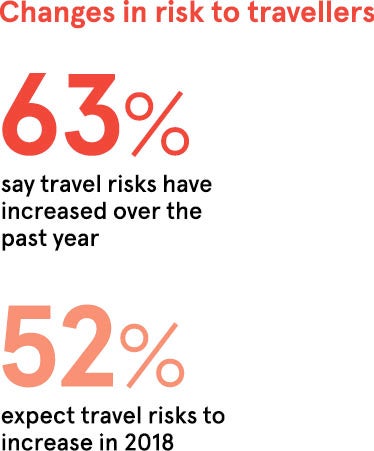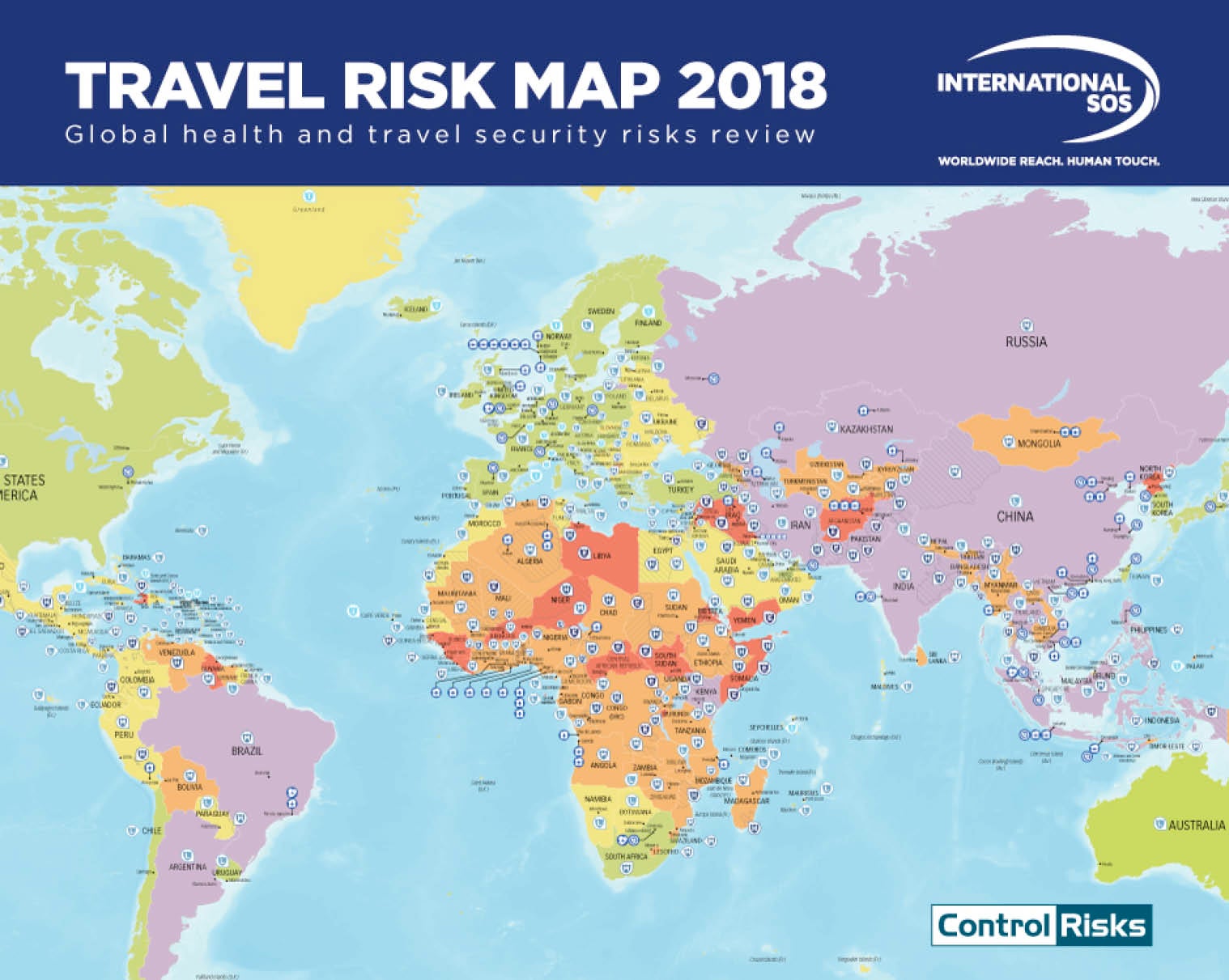Hurricanes in the Caribbean, terror attacks in places previously considered safe, disease outbreaks such as the plague in Madagascar, and even recent political tensions around Russia and North Korea – such events have all been changing actions and attitudes towards the health, safety and security of the workforce.
Increasingly, this protection is also recognised as a critical aspect of maintaining business resilience and sustainability. If you have an international workforce, your business objectives and brand reputation could be at risk from such incidents, in addition to the impact on personnel.
While organisations are increasingly implementing prevention and mitigation measures, 90 per cent are ignoring the impact a wellbeing policy could have on their travelling workforce
Almost two thirds of business decision-makers perceive travel risks to have increased in the past year, according to the Ipsos MORI Global Business Resilience Trends Watch 2018. Travel plans were changed, predominantly due to concerns over security threats (58 per cent), natural disasters (43 per cent) and civil unrest (34 per cent).
 While organisations are increasingly implementing prevention and mitigation measures, there are still opportunities for them to improve as major strategic aspects are being missed.
While organisations are increasingly implementing prevention and mitigation measures, there are still opportunities for them to improve as major strategic aspects are being missed.
Access to time-critical information is key before, during and after any trip. Travellers with insight on their destination, access to appropriate preparation, and around-the-clock global support and assistance are better placed to identify and mitigate travel-related hazards and threats. For instance, a robust travel risk mitigation programme would include risk-rating indicators supported by additional destination insight and advice. It would also include travel security and medical alerts relating to destinations, both on the ground and supported remotely.
While the preventative agenda in medical and travel risk mitigation is on the rise, decision-makers reveal that a strategic and far-reaching view may be a missed opportunity by many organisations. A staggering 91 per cent of organisations have potentially not included their travel risk programme in their overall business sustainability programme.
Also 90 per cent are seemingly ignoring the impact a wellbeing policy could have on their travelling workforce as this fell at the bottom of risk-mitigation techniques implemented in 2017. This is despite an increasing understanding of how these wellness techniques can impact within the context of the Global Reporting Initiative index.1
Companies are prioritising risk-mitigation techniques. These include travel security and medical interventions, such as annual health check-ups, which can be key to spotting potential health issues that need managing prior to travel or assignments.
However, organisations report that they continue to encounter barriers to health and travel security. Educating employees about travel risk is the most common challenge, followed by communicating with employees in a crisis and ensuring they have read pre-travel information. All these are critical aspects to protecting the global mobile workforce.
Understanding the risks, and implementing risk mitigation and assistance, are key to keeping the travelling workforce on the go and able to fulfil their business aims.
In future, successful global mobility programmes will also include consideration of the changing demographic of the mobile workforce and new marketplace dynamics, including the increased use of shared economy services such as Uber and Airbnb. The immediate risks, such as hurricanes, disease outbreaks and unforeseeable security incidents, will see organisations scrutinised in terms of preventative measures and recovery.





